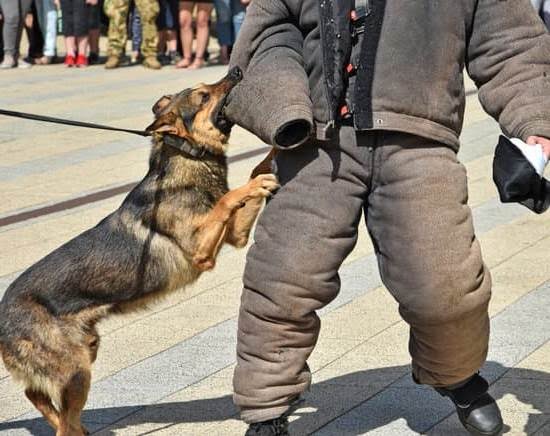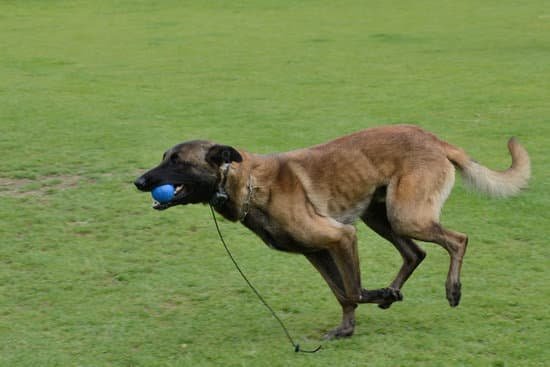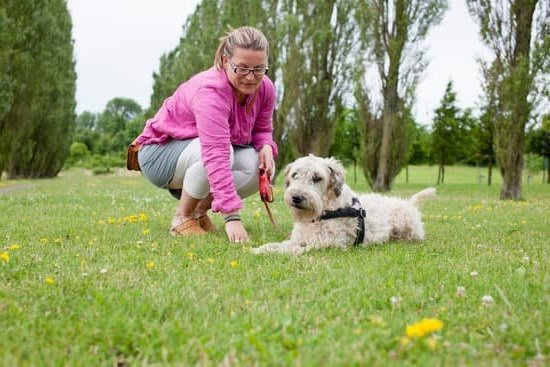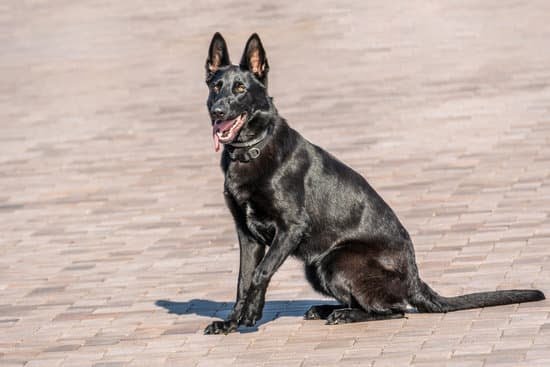Introduction
Cavaletti training is a type of dog agility training that involves using low jumps (cavaletti) for the purpose of strengthening and stretching a dog’s muscles in order to increase agility. It is an excellent tool used by exercise physiologists and dog trainers alike to help improve coordination, flexibility and strength.
When it comes to improving core strength, this type of exercise offers substantial benefits that are often overlooked. The cavalettis provide a platform that adds resistance against which specific muscles can be exercised while also providing physical support while jumping, allowing the animal to maintain balance even when faced with changes in terrain or disruptive surfaces. Furthermore, regular use may reduce strain caused by intensive activities by helping protect joints, ligaments and tendons as well as promoting muscle relaxation.
When included as part of an overall training program for dogs, cavaletti exercises can yield far-reaching effects on many other aspects such as improved speed and acceleration, better endurance and concentration levels during long runs or competitions, increased confidence levels due to increased awareness of their body’s movements, plus improved reacting skills due to enhanced coordination capacities. It encourages problem solving while enhancing the range of motion possibilities they can explore while keeping them healthy and fit at the same time!
In addition to its tangible physical benefits, this method is equally useful in the mental development process. By introducing controlled challenges that need to be addressed sequentially – similar to human obstacle courses – the pupil may start creating strategies on how best tackle these tasks over time. As sprints become more complex iterations involving different combinations of jumps and turns, dogs develop essential coordination capabilities focused on problem-solving or following routines without requiring previous prompts from the instructor.
What is Cavaletti Training?
Cavaletti Training is a training method specifically used for dogs that allows them to practice and build up the muscles they need in order to excel in the various canine sports events. This type of training involves specially-made wooden blocks or poles, commonly known as “cavalettis” which are placed closely together at different heights on the ground. The dog must then navigate through the cavalettis as it runs, jumps and weaves its way towards the finish line with agility and skill. In addition to physical exercise, Cavaletti Training helps build mental strength and endurance in dogs while teaching them to focus on responding quickly to commands given by their handler. With repeated practice and repetition, this form of training will help build strength and fitness required for certain canine sports such as agility, canine freestyle, flyball, dock diving and tracking among many others.
Explanation of the Equipment Needed for Cavaletti Training
Cavaletti training for dogs is an effective way to improve balance, proprioception and musculoskeletal strength. The dog jumps over short wooden bars or poles that are set up in the shape of a figure 8 on the ground, with each bar several inches apart. To perform cavaletti training, it is important to have the right equipment.
First, you’ll need a cavaletti set which consists of 4-6 adjustable poles. Typically, these poles are made of wood but you can also purchase plastic versions that may be easier to assemble. Additionally, you will need something to hold the poles in place while your dog performs the jumps – sandbags work well as they can easily be placed on either side of each pole.
Finally, ground markers such as cones or similar objects should also be used. As your dog progresses in their training, you can increase the difficulty level by making alterations such as increasing distances between poles and altering the jump’s direction or number of repetitions asked for. Side steps and serpentine patterns between poles can also add great exercises for agility drills.
By using proper equipment and being creative with your training routine and sequences you can create an effective workout that is fun for both you and your dog!
Safety for Working with Your Dog and the Cavaletti Equipment
When working with your dog and the cavaletti equipment, it is important to ensure that your dog stays safe at all times. Good communication between you and your pet is key to having a successful training session. Make sure you have taught basic obedience commands before beginning any Cavaletti training activities. Additionally, create an environment in which the exercises can be done safely — doing this may require confining or crating other animals in the house during the session. There should also be no distractions around, such as people outside the yard or other dogs in view.
It is important to pay attention to your dog’s body language so that you can determine if there is any discomfort or fear associated with the exercises. If you notice signs of stress from your pup, stop immediately and reward them for their effort rather than pushing ahead when they’re not 100% comfortable yet. Never force your pet into doing anything they are not ready for; instead build up slowly with more familiar exercises before asking for tougher challenges. Ensure that both you and your canine companion are always wearing protective gear when necessary, such as special boots for their feet as they will be going over uneven terrain while navigating through the jumps and obstacles on the course. Finally, keep verbal praise positive and consistent throughout to provide lots of positive reinforcement during the activity!
Step-by-Step Guide to Introducing Your Dog to a Cavaletti Course
1. Start by gathering the materials you need: cavalettis, a lead or long line and a few treats.
2. Choose an area that your dog is familiar and comfortable with, free of distractions and secure from other animals.
3. Before starting the course, take some time to engage in fun activities and get your dog in a positive state of mind. Make sure they are relaxed and ready for learning.
4. Set up the cavaletti course with 6-8 poles at the beginner height (about 4 inches high) in an even line and spaced between 12-15 inches apart.
5. Once the poles are set up, lead your dog over them while repeating a verbal cue such as “walk” or “over” each time they successfully go over one pole. Give treats every few attempts to reward and encourage them as much as possible!
6. As you go along with the drills progress to higher poles if desired and add new challenges like serpentine patterns or encouraging them to walk around corners of cavalettis – always remember to give lots of feedback!
7. After your session is finished make sure you end it on a positive note by praising your dog for their efforts no matter how small they may seem! Then when you’re done playing treats can be given one final time as a way to celebrate the training session’s success!
Types of Exercises to Incorporate With Cavaletti Training
Cavaletti training is a great way to develop coordination and agility for your dog. Cavaletti training involves using poles, tires or other elevated objects that the dog is required to jump over or weave around as part of their exercise routine. This type of exercise helps improve strength, flexibility, and can even help reduce boredom in dogs who are used to long walks and running around in circles during playtime.
Incorporating cavaletti training into your dog’s exercises routine can be done by starting off with shorter distances and adjusting the height of the obstacles as your pup gains more confidence in their wall jumps or weaving maneuvers. When selecting which obstacles will work best for you and your pup keep in mind that they should have enough clearance room when jumping over them so they don’t hit their feet on the obstacle while they’re mid-air. Other variations of exercises to incorporate include ladders, tire jumps, weave poles and tunnels. You can also use different speeds with your pup such as jogging in between each obstacle to vary the intensity. With each variation you lightly guide them if needed and reward them once they master the trick!
How to Increase the Challenge of Cavaletti Training Over Time
As your dog progresses in their cavaletti training, it is important to continually find ways to increase the challenge for them. This can be done in several ways. Firstly, you should increase the number of cavaletti poles you use, making it more difficult for your dog to maneuver around them and stay focused. Secondly, you can vary the position of the poles themselves — use unevenly spaced configurations, place them at angles and heights, or even change their surface material from one day to another. Finally, as your dog becomes more experienced with the poles and exercises, you can begin adding obstacles such as jumps and tunnels between certain pairs of poles. With all these alterations combined, you will gradually raise the difficulty of the course and test your pup’s skills ever further!
Mistakes to Avoid When Working with Cavaletti Training
1. Trying to move too quickly: Going slowly is essential when it comes to cavaletti training. Don’t push your dog ahead of their comfort level, and don’t expect them to go faster than they are physically able. Instead, gradually increase the distance between cavaletti poles until the desired height or challenge is achieved.
2. Not allowing for rest breaks: Just as with any exercise, it is important to give your dog rest at regular intervals while doing cavaletti training. This should include water breaks during hot days and taking time away from the course when your dog shows signs of fatigue or exhaustion.
3. Not using positive reinforcement: Positive reinforcement is one of the most effective ways to encourage desired behavior in dogs and promote better performance during cavaletti exercises. Using treats or verbal praise as rewards for success will help motivate your dog and create a safe environment for play and learning at the same time.
4. Not setting up safety precautions: Before beginning a cavaletti session, ensure that all safety precautions have been taken such as laying down padding on hard surfaces and familiarizing yourself with emergency procedures in case both you and your dog encounter an uncontrollable situation on the course.
Conclusion
Cavaletti training is an extremely beneficial training exercise for both dogs and their owners. It helps build strength and agility as well as promotes mental stimulation and improved overall health in your dog. This type of training strengthens the bond between you and your pup, allowing them to gain confidence and allowing you to trust that they will listen and obey commands. This can help reduce stress, fear, aggression, and unwanted behaviors from your dog over time.
Cavaletti training also encourages your pup’s physical fitness. Not only does it develop muscle tone, but it also increases mobility in their joints. Cavaletti training encourages balance, coordination, agility and a greater range of motion for your dog; these benefits are especially important if you plan to take part in active leisure activities with your four-legged friend.
The mental benefits of cavaletti training also cannot be ignored as participating in this activity provides psychological stimulation for any breed of dog. Keeping them mentally stimulated can help improve their level of obedience as well increase their attention span during learning sessions when compared to traditional teaching methods. The use of verbal commands incorporated into the exercises is great way to enhance your dog’s understanding of language while at the same time providing physical stimulus to keep them fit and engaged.
Overall, cavaletti training offers major advantages when helping create a healthier lifestyle for you and your pup alike!

Welcome to the blog! I am a professional dog trainer and have been working with dogs for many years. In this blog, I will be discussing various topics related to dog training, including tips, tricks, and advice. I hope you find this information helpful and informative. Thanks for reading!





